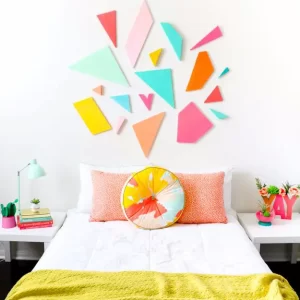
In a fast-paced world filled with constant stimulation, many people are turning to minimalist interior design as a way to create calm and peaceful living spaces
With its focus on simplicity, functionality, and visual clarity, minimalist decor allows for a clutter-free environment that promotes a sense of serenity and balance. In this article, we will delve into the principles of minimalist interior design and explore how simplicity in decoration can transform your home into a sanctuary of tranquility
1. Declutter and Streamline:
The foundation of minimalist design lies in decluttering and simplifying your living space. Start by getting rid of unnecessary items, keeping only those that hold true value or serve a practical purpose. Streamline your furniture choices, opting for clean lines, sleek designs, and multifunctional pieces that maximize space and functionality. Embrace open spaces and allow each element to breathe.
2. Neutral Color Palette:
A minimalist interior is often characterized by a neutral color palette, such as whites, beiges, grays, and earth tones. These colors create a sense of calmness and visual unity throughout the space. Introduce pops of color sparingly through accent pieces or artwork to maintain a harmonious and balanced aesthetic. Keep the color scheme consistent to avoid visual clutter.
3. Focus on Natural Light:
Maximizing natural light is essential in minimalist design. Remove heavy drapes or blinds that obstruct light and opt for sheer curtains or window treatments that allow sunlight to filter through. Keep windows clean and unobstructed to enhance the feeling of openness and connect with the outdoors. If privacy is a concern, consider using frosted glass or sheer panels.
4. Essential Furnishings and Decor:
In a minimalist interior, every piece of furniture and decor serves a purpose and has a specific function. Choose furnishings with clean lines and a minimalistic design aesthetic. Limit the number of decorative items, and select those that are truly meaningful or add visual interest without overwhelming the space. Consider incorporating natural materials like wood, stone, or metal to add texture and warmth.
Conclusion:
Minimalist interior design embraces simplicity as a means of creating a tranquil and balanced living space. By decluttering, opting for a neutral color palette, maximizing natural light, and selecting essential furnishings and decor, you can transform your home into a serene sanctuary. Embracing minimalism is not about sacrificing style but rather about cultivating an environment that promotes mindfulness and allows you to focus on what truly matters. So, embrace simplicity in decoration and unlock the potential for a harmonious and peaceful living space that reflects your personal style.

